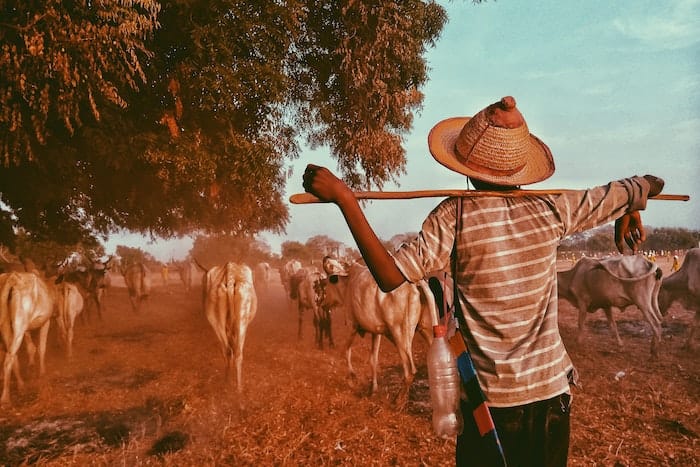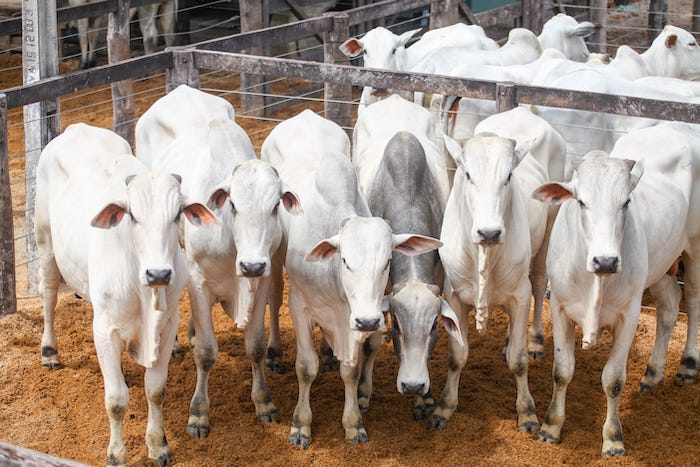Food manufacturers work very closely with their staff and a network of professionals to ensure their cattle receive the proper care, including the proper diet and medical attention.
The principal factors that affect the welfare of cattle include illnesses, parasites, and pests. However, let’s take a broad look at management tactics that can really help your cattle maintain good health before we get into the specifics of maintaining cattle health.
Good and Healthy Nutrition
Your animals’ health will be maintained by a smart nutrition plan. The correct amount of grazing during the summer months, along with high-quality forages and during non-grazing months, is essential for the animals.
To ensure that animals receive the nutrient-rich feed they require, dairy farmers closely collaborate with animal nutrition experts and veterinarians.
With the help of supplemental feeds, vitamins, minerals, and other nutritional products, nutritionists attach importance to the diet. Accessibility to freshwater resources is also necessary because cows consume 30 to 50 gallons of fresh water each day.
Livestock producers balance the ration packs for their animals to ensure a healthy diet, just like with human nutrition, where individuals consume balanced nutrition as well as daily mineral and vitamin supplements. In order to achieve this, farmers test their channels and then match the nutrients in the fodder to the needs of the animals. The nutritional requirement tables take different animal ages and their level of production into account.
Keep an Eye on an Animal’s Metabolism
All processes that involve the absorption, breakdown, transformation, excretion and utilization of the nutrients that have been given to an animal are referred to as metabolism in animals. The term “metabolic disease” refers to a set of ailments brought on by a deficiency in some vital nutrients, which disturb the animal’s regular metabolic functions. A variety of factors can lead to metabolic diseases in animals that can pose a great danger to their well-being. These conditions are complex and multifaceted and frequently manifest during periods of high physiological demand or stress, with delayed gestation and early lactation serving as important exceptions.
It is common for even more than one disorder to manifest at the same time, further complicating the situation, and the signs of such circumstances can overlap and resemble one another. Because the prevention and treatment of these diseases differ, it is crucial to understand their underlying reasons.
Seek Veterinary Advice to Develop a Health Management Strategy
Maintain a close watch on your farm animals every day, and encourage the veterinarian to check on them every couple of weeks. The objective is to keep your animals healthy, so focus completely on that.
One of the most crucial facets of a dairy farmer’s job is having to care for the cattle.
Maintain the Farmland Clean
The significance of a dry, clean atmosphere with adequate ventilation cannot be overstated. When animals are adequately nourished and have good hair layers or wool length, they are well prepared to withstand cold conditions.
The quality of air can improve as a result of adequate ventilation. For this reason, during the winter, livestock farmers keep the barns clean and well-bedded. It’s crucial to keep these shelters reasonably clean as well; there’s nothing worse than watching animals wallowing in dirt, sludge, and excrement.
Only use antibiotics and other medications as a last resort to get rid of illnesses, pests, and parasites. You should collaborate with a cattle veterinarian in order to do this.
Vaccinate Against Various Diseases That Can Harm Cattle and Humans
Farmers choose vaccination products that meet the specific demands of their farms. They select vaccines based on previous disease history on the farm as well as the risk of disease exposure. Producers carefully study product labels and manage vaccines. Simple methods that producers follow include storing animals at the right temperature, vaccinating fresh and dry livestock, injecting using clean needles, and injecting the proper way. Expiration dates are also checked by producers, and expired products are discarded. Only healthy animals are vaccinated in order for the immune system to make the best use of the vaccine.
Create a Biosecurity Strategy to Prevent the Spread of Infectious Illnesses
Restricted access to animal housing areas is one measure to avoid exposure to germs or even other infections from shoes or car tires.
Contact with other animals, whether sick or not, is one way for animal diseases to enter a farm. Producers that display this livestock at various shows may keep these animals away from the primary herd or flock when they return home. This quarantine phase must last between three and four weeks before the animals are mingled together with the rest of the farm’s herd or flock.
Animal infections, on the other hand, can enter a ranch through indirect contact. Whenever farmers visit other farms, transfer animals to a sales barn, or even attend a county fair, this occurs. When the producer returns to the farm, they change their shoes and clothes to prevent exposure of their farm animals to diseases and viruses that may have been carried home on their clothes or footwear.
Prevention strategies are not perfect: sick animals do appear on occasion on livestock farms. Nevertheless, the objective is to decrease the likelihood of animals becoming ill so that therapy is not required.
A well-planned strategy to manage cattle health and welfare reduces illness risk while increasing production potential and profit. All cattle farmers must prioritize keeping their herds healthy and infectious diseases away from the farm.


